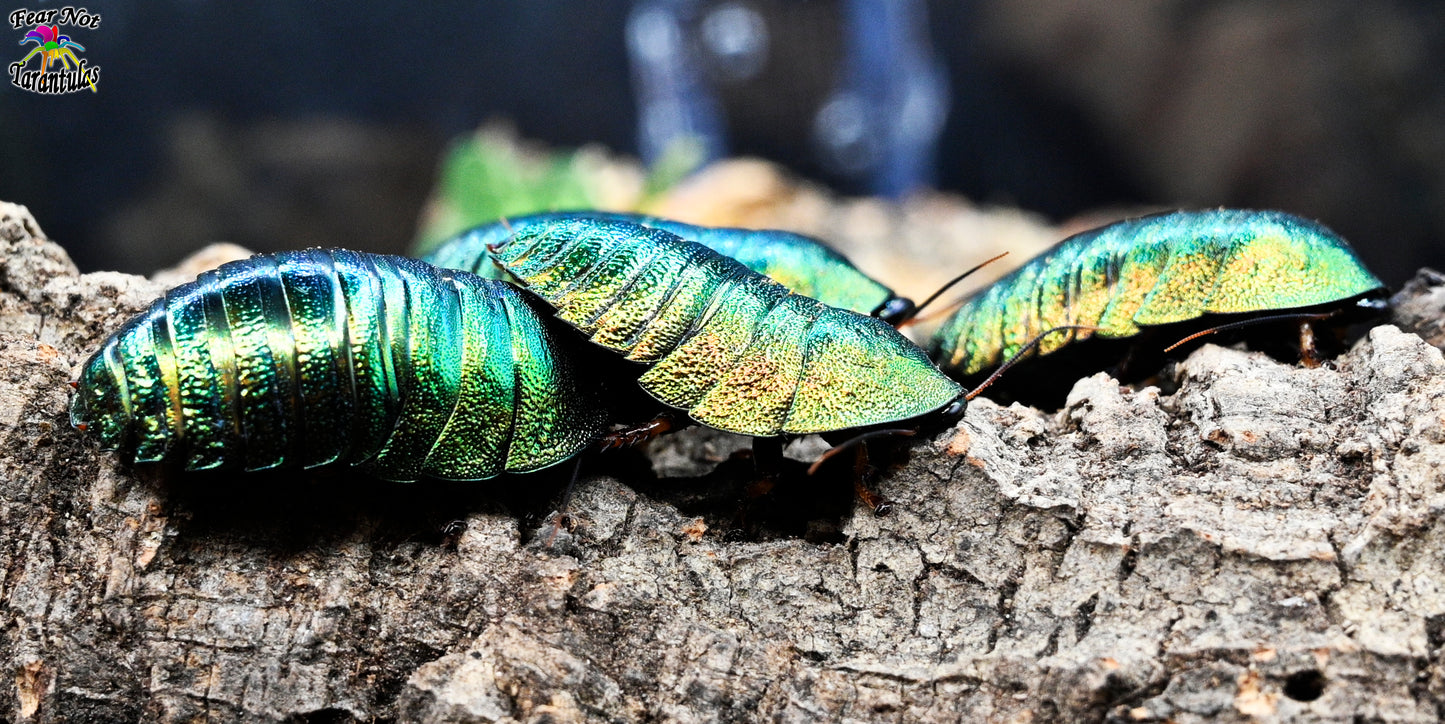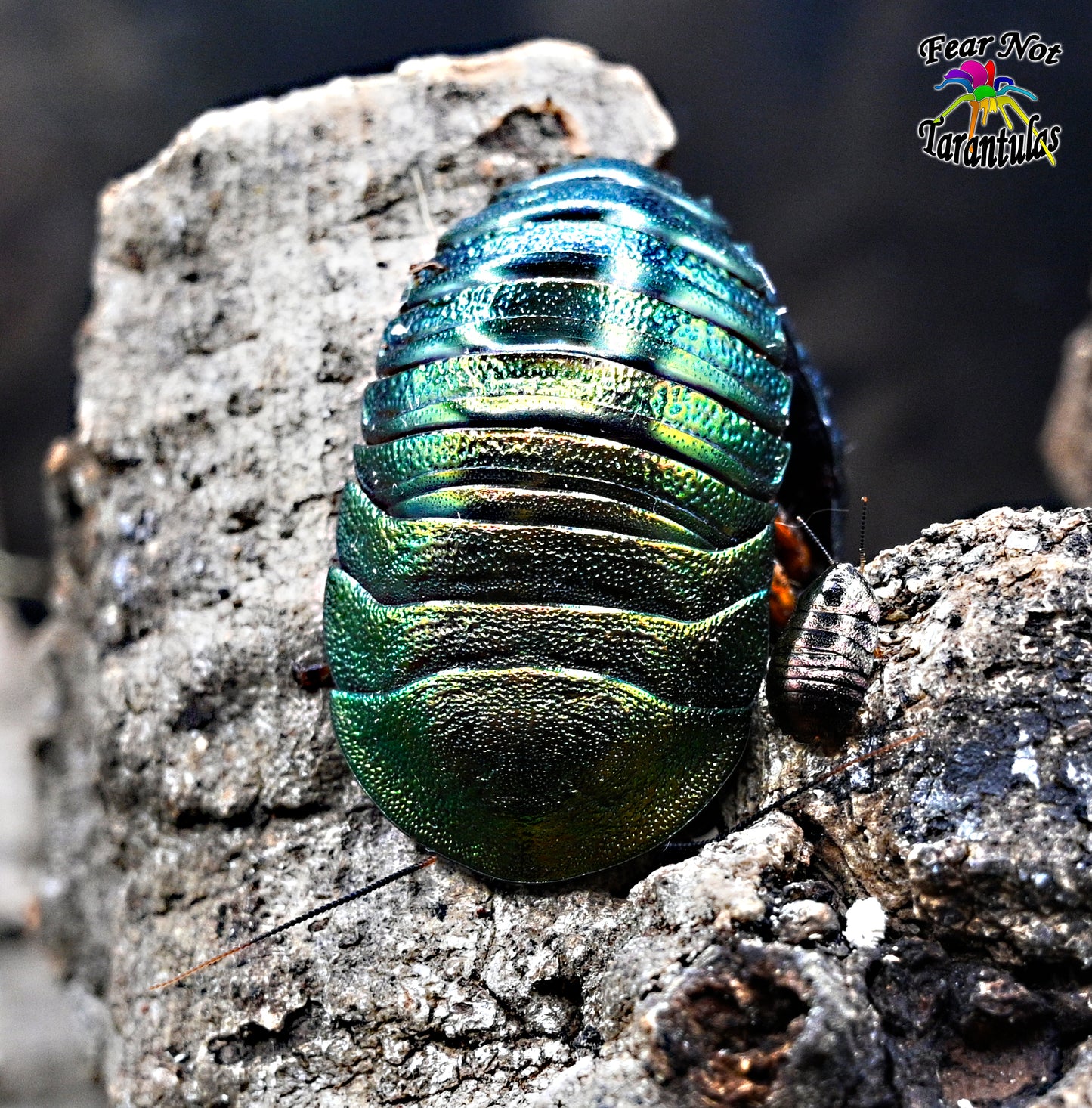Fear Not Tarantulas, Inc.
Corydidarum magnifica (was Pseudoglomeris magnifica) (Magnificent Emerald Roach) 1/4" - 1/2" mixed nymphs. We include a vial of bee pollen! *CANNOT BE SHIPPED TO FLORIDA*
Corydidarum magnifica (was Pseudoglomeris magnifica) (Magnificent Emerald Roach) 1/4" - 1/2" mixed nymphs. We include a vial of bee pollen! *CANNOT BE SHIPPED TO FLORIDA*
5.0 / 5.0
(1) 1 total reviews
Couldn't load pickup availability
Bee pollen is an important part of their diet so we include a small vial of it with your order. 😊
This beautiful arboreal roach is an amazing creature! They care for their young for several months, allowing the babies to clutch onto the underside of an adult. They love to climb and are very easy to care for. Care information is below.
Care for these magnificent creatures:
Housing: Emerald roaches are an arboreal species of roach that prefer a taller arboreal set up. We’ve found that these roaches thrive in tighter living quarters, so smaller enclosures with just a small layer of substrate works well! Height and ventilation are the most important aspects of their housing, they do best with ample amounts of cross ventilation and plenty of vertical cork bark to hide in. Fake silk leaves work well as a hide and as a surface for them to drink water droplets off of, you can lightly mist the enclosure a couple of times each week for them to drink.
Diet: These roaches have specialized diets of bee pollen and fruit. Apples and bananas seem to be a favorite.
Feeding: In small numbers, these roaches don’t seem to eat much, but it’s important to provide them a constant supply of bee pollen (pro tip when spraying down the enclosure try to avoid getting the bee pollen wet as it will mold). Replace fruit a couple of times each week.
Temperature: They prefer a warmer climate, they will grow and breed faster when kept in the mid 80s, but will be ok in the 70s. If you see they are not eating well, we suggest raising the temperature a bit.
Molting: This species leave their molts on substrate, so the molts do have to be removed. They will not eat their molts. The molts look like little metal pieces and it can be easy to mistake a molt for a deceased roach.
About: these gorgeous roaches are found in the rainforests of Vietnam high in the trees hiding amongst the lichens and bark. Being an arboreal species, they have an incredibly strong grip and can be hard to pick up once they’ve clung onto something! This species is one of few roach species that exhibits parental behaviors, the females will carry their brood on their underside until the babies have gone through one or two molts (and even after growing the juveniles can often be found hiding beneath the adults). Emerald roaches can be very slow growers taking 6-9 months to reach maturity, be patient with them! Males and females once mature are sexually dimorphic, males have wings and while they cannot fly they can fall with style!
Share








